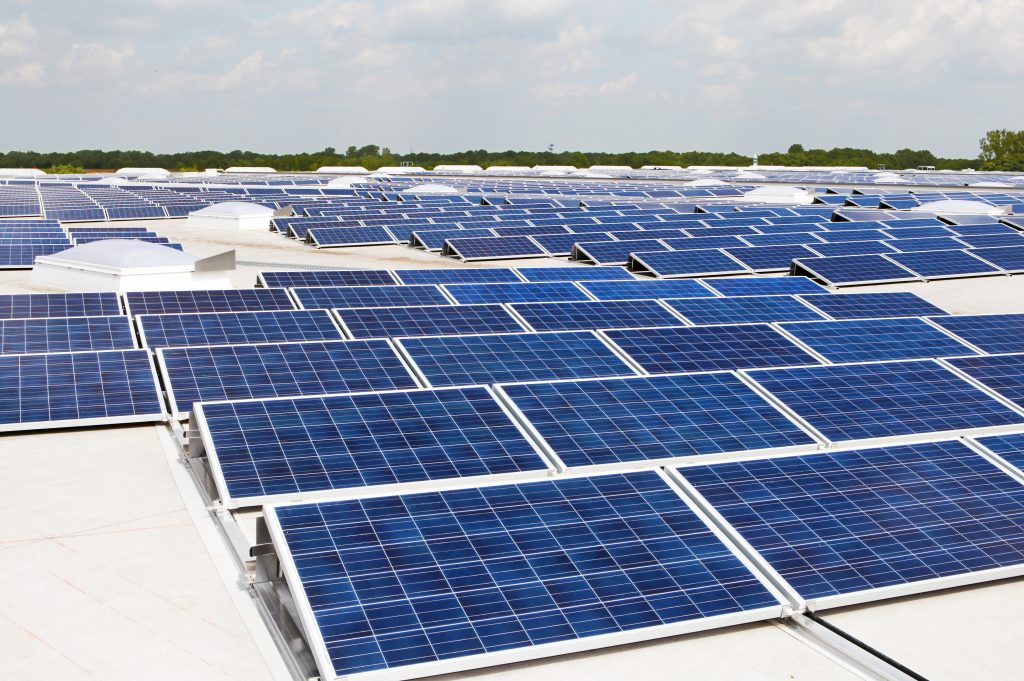10 Apr Solar photovoltaic cell manufacturing in India
THIS ARTICLE COVERS ‘DAILY CURRENT AFFAIRS’ AND THE TOPIC DETAILS OF “RECENT IMPORT RESTRICTIONS ON SOLAR PV CELL”. THIS TOPIC IS RELEVANT IN THE “SCIENCE AND TECHNOLOGY” SECTION OF THE UPSC CSE EXAM.
Why in the news?
Media outlets have extensively covered recent governmental directives aimed at bolstering the domestic manufacturing of solar modules to bolster India’s renewable energy sector. These actions are often portrayed as ‘import restrictions’, following the Ministry of New and Renewable Energy’s (MNRE) March 29 announcement to reinstate its 2021 notification regarding the ‘Approved List of Models and Manufacturers of Solar Photovoltaic [PV] Modules’, commonly referred to as the ALMM list.
What is the ALMM list? Why is it being reinstated?
- The ALMM list comprises manufacturers eligible for utilization in various government projects, government-assisted projects, and projects under government schemes and programs.
- However, this notification was put on hold two years after its issuance for the past financial year. Although the government did not provide a specific reason for this action, it is believed to have stemmed from concerns raised by renewable power producers.
- These producers had secured sale contracts with the government before the implementation of these rules when solar modules and cells were predominantly imported from China at highly competitive rates. At that time, India’s domestic renewable sector was unable to match the sudden surge in demand for solar power production equipment at rates offered by Chinese manufacturers.
The government’s decision to reintroduce this regulation is based on the assessment that various measures, such as the Production Linked Incentive (PLI) scheme, have enhanced the production capacities of India’s domestic sector and improved its price competitiveness to meet local demand. It is important to note that this initiative is aimed at import substitution rather than restricting imports.

Status of Solar PV cells production in India
- India heavily relies on imports to fulfill its demand for solar cells and modules, primarily sourcing from China and Vietnam. According to data provided by the Minister for New and Renewable Energy in Parliament in February of the previous year, India imported approximately $11.17 billion worth of solar cells and modules over the past five years.
- As of January in the fiscal year 2023-24, data from the Ministry of Commerce’s Import-Export division revealed that China accounted for 53% of India’s solar cell imports and 63% of solar PV module imports. Ratings agency ICRA has estimated that China dominates over 80% of the manufacturing capacity across polysilicon, wafer, cell, and module production.
- In contrast, India’s manufacturing capacity remains relatively low and is mainly concentrated in the final manufacturing stage. ICRA noted in its November 2023 report that the Production Linked Incentive (PLI) scheme can address this imbalance, with integrated module units expected to emerge in India within the next 2-3 years.
Steps taken by India
Over the past five years, India has taken significant steps to reduce its reliance on imports in the solar energy sector.
It all began with the introduction of the ALMM order in January 2019, but the issue gained prominence during the COVID-19 pandemic when global supply chains were severely disrupted.
Responding to this challenge, Finance Minister Nirmala Sitharaman unveiled the ₹19,500 crore PLI scheme in the Union Budget of 2022-23. The primary objective of this scheme is to boost domestic manufacturing across the entire solar supply chain, covering everything from polysilicon to solar modules.
The government also implemented a high customs duty of 40% on PV modules and 25% on PV cells. However, these duties were later reduced as the pace of solar capacity additions slowed down. Reuters reported that developers had bid exceptionally low tariffs to secure power purchase contracts, relying heavily on imports of Chinese equipment.
Way forward:
- Policy Support: Implementing policies that provide incentives and support for domestic manufacturing, such as tax breaks, subsidies, and tariff protection. Continuously reviewing and updating regulations to create a conducive environment for investment and growth in the solar PV cells industry.
- Financial Incentives: Offering financial incentives such as grants, subsidies, and low-interest loans to encourage investment in solar PV cell manufacturing facilities. This could include the continuation and expansion of schemes like the Production Linked Incentive (PLI) scheme.
- Research and Development (R&D): Investing in R&D to foster innovation and develop indigenous technology for solar PV cell manufacturing. Collaboration between government, academia, and industry can accelerate technological advancements and improve the efficiency and cost-effectiveness of solar PV cells.
- Infrastructure Development: Developing infrastructure such as industrial parks and special economic zones dedicated to solar PV cell manufacturing. Providing access to reliable power, water, transportation, and logistics infrastructure can attract investments and support the growth of the industry.
- Skill Development: Investing in skill development programs to train a skilled workforce for the solar PV cells industry. Developing specialized training programs and partnerships with educational institutions can ensure a steady supply of qualified professionals and technicians.
- Market Development: Promoting domestic demand for solar PV cells through incentives such as net metering, feed-in tariffs, and renewable energy targets. Encouraging the adoption of solar PV systems in residential, commercial, industrial, and utility-scale applications can create a stable market for domestic manufacturers.
FInally, we can learn from China’s case, where the Government engaged itself in hand-holdin approach to support the Industry by providing Cheap electricity which constitutes almost 40% of the cost. Also, Chinese government policies have prioritized solar PV as a strategic sector.
Download plutus ias current affairs eng med 10th April 2024
Hello friends, I am Ankit Kumar here at Plutus Ias to provide you with some really insightful content that will help you prepare for UPSC. Here is a brief introduction about me
I have written 2023 mains examination, UGC net JRF qualified and worked in several UPSC coachings as PSIR and current affairs mentor and faculty. Apart from this, I am also a student like you and a lifelong learner working in this profession, which I love.



No Comments